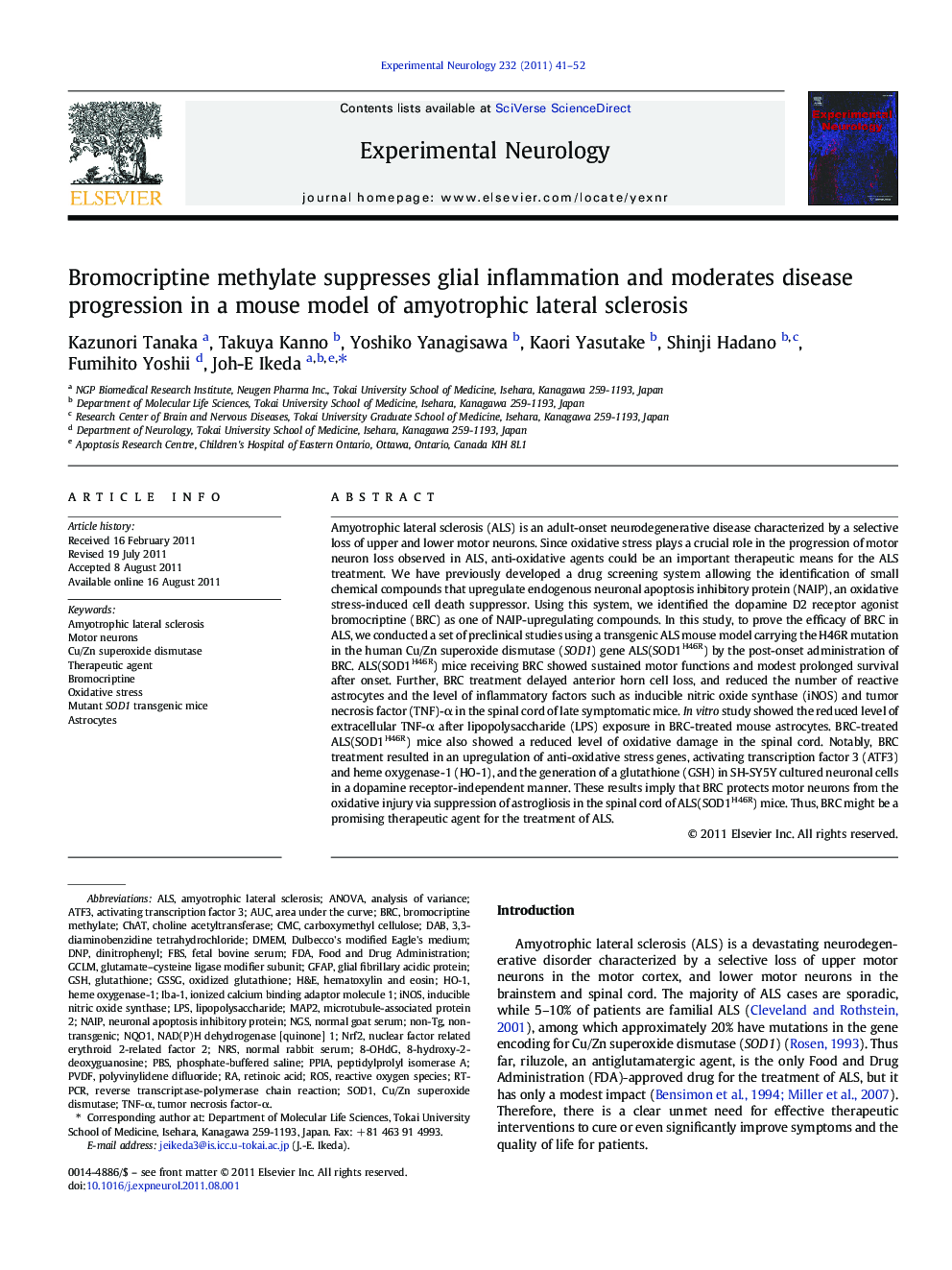| کد مقاله | کد نشریه | سال انتشار | مقاله انگلیسی | نسخه تمام متن |
|---|---|---|---|---|
| 3055706 | 1186534 | 2011 | 12 صفحه PDF | دانلود رایگان |

Amyotrophic lateral sclerosis (ALS) is an adult-onset neurodegenerative disease characterized by a selective loss of upper and lower motor neurons. Since oxidative stress plays a crucial role in the progression of motor neuron loss observed in ALS, anti-oxidative agents could be an important therapeutic means for the ALS treatment. We have previously developed a drug screening system allowing the identification of small chemical compounds that upregulate endogenous neuronal apoptosis inhibitory protein (NAIP), an oxidative stress-induced cell death suppressor. Using this system, we identified the dopamine D2 receptor agonist bromocriptine (BRC) as one of NAIP-upregulating compounds. In this study, to prove the efficacy of BRC in ALS, we conducted a set of preclinical studies using a transgenic ALS mouse model carrying the H46R mutation in the human Cu/Zn superoxide dismutase (SOD1) gene ALS(SOD1H46R) by the post-onset administration of BRC. ALS(SOD1H46R) mice receiving BRC showed sustained motor functions and modest prolonged survival after onset. Further, BRC treatment delayed anterior horn cell loss, and reduced the number of reactive astrocytes and the level of inflammatory factors such as inducible nitric oxide synthase (iNOS) and tumor necrosis factor (TNF)-α in the spinal cord of late symptomatic mice. In vitro study showed the reduced level of extracellular TNF-α after lipopolysaccharide (LPS) exposure in BRC-treated mouse astrocytes. BRC-treated ALS(SOD1H46R) mice also showed a reduced level of oxidative damage in the spinal cord. Notably, BRC treatment resulted in an upregulation of anti-oxidative stress genes, activating transcription factor 3 (ATF3) and heme oxygenase-1 (HO-1), and the generation of a glutathione (GSH) in SH-SY5Y cultured neuronal cells in a dopamine receptor-independent manner. These results imply that BRC protects motor neurons from the oxidative injury via suppression of astrogliosis in the spinal cord of ALS(SOD1H46R) mice. Thus, BRC might be a promising therapeutic agent for the treatment of ALS.
► The chronic post-onset BRC administration to ALS(SOD1H46R) mice sustains motor functions.
► BRC treatment delays anterior horn cells loss in the spinal cord of an ALS mouse model.
► BRC treatment extends the post-onset survival interval in an ALS mouse model.
► BRC exerts the neuroprotective activity via the suppression of astrogliosis.
► BRC is a potent compound for the treatment of ALS.
Journal: Experimental Neurology - Volume 232, Issue 1, November 2011, Pages 41–52